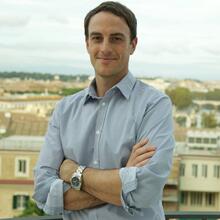In the weeks and months leading up to this first gathering of the synod in Rome, we talked a lot at America about the expectations for results. Is the church setting up the people of God for inevitable disappointment? What if we go through all this effort of listening and empowering voices and nothing changes? Call it a “Western” obsession with results if you like, but ask yourself, what’s the point of opening up a synodal culture unless it equips us to make some very real and practical—let’s say incarnate—decisions? G. K. Chesteron wrote, “The object of opening the mind, as of opening the mouth, is to shut it again on something solid.”
We stand on the verge of receiving the first answers to this question. As you read this, the synod is preparing its final synthesis report, which will outline what transpired these last three weeks, where there were convergences and divergences in the discussions on communion, mission and participation, and what pathways could be taken over the next year to deepen the discernment in the whole church leading up to the second synod gathering in October 2024. The synod organizers have said the document will be short.
I’m as ready as anybody to parse it for specific references or even hints at the topics that matter most to me. I’m ready to jump for joy if certain things are acknowledged. I’m ready to pull out my hair if it’s stilted and uninspiring. But I’m not going to react in either of those ways.
People want to know that the issues they raised over the past few years in listening sessions in their parishes and dioceses are being taken seriously.
Having been on the ground in Rome these past three weeks, speaking to synod delegates on and off the record, I’ve gained an appreciation for “the process” over immediate results. I’m eager for the final document, but I don’t need to read it to understand what just happened. Call me naïve; I don’t think I am.
Last week, a highly respected Vatican journalist from the United States raised the question of expectations at a press briefing. People want to know, she said, that the issues they raised over the past few years in listening sessions in their parishes and dioceses are being taken seriously. She questioned the strategy of keeping the media—and therefore the entire people of God—in the dark about the 35 round-table discussions. Is the accomplishment of this synod, she asked sarcastically, the symbol of a round table?
I can only speak for myself as a Catholic and a journalist who has covered multiple synods for more than a decade as a young adult. I’ve had my disappointments and frustrations with the church, though admittedly I’ve never been deeply and personally hurt by the church the way many people have. But, for what it’s worth, the symbol of a round table is enough for me at this point.
Around each of those tables, made up of 12 disciples, everyone has equal time to speak in the group’s discernment. The documents they submitted at the end of each module reflect as much of the voice of layperson “X” as it does of bishop “Y.” Bishop “Y” has, perhaps for the first time in his life, been made to listen without immediately responding and without the expectation that he will have the final say. Layperson “X” is not looking for bishop “Y’s” approval or decision. Around the small table in the synod hall, their voices have the same authority and equal value. They decide together.
While much of the content of those group discernments has been kept private, the people of God have been given the visual symbol of the round table for the synodal journey. It says a lot. Instead of placing all of our hopes and expectations for the synod in this first, brief synthesis report, I suggest we read it carefully and then go to our next parish or diocesan meeting and install a round table, give each person equal time to speak from their authoritative experience as a baptized person, pause regularly for silent prayer and see what happens.







